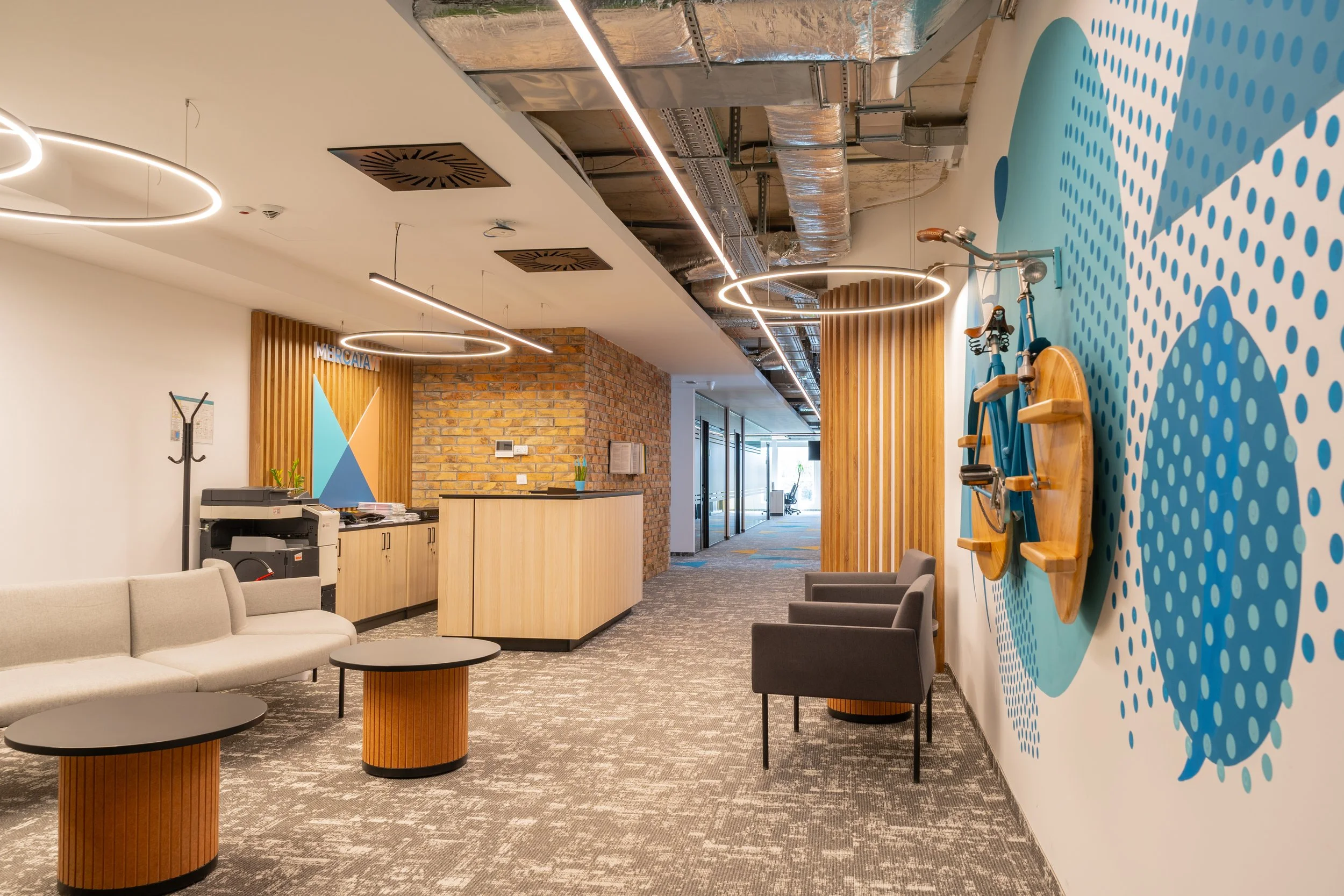Quiet by Design
Entry Lobby Area
Case Study: MERKATA-VT | 2,000 m² | Two Levels
Acoustical Comfort: Zoran Šobić, ICH doo Belgrade
Design:
Predrag Stevanović, PS Arch Belgrade
Zoran Šobić, ICH doo Belgrade
Photography: Jovana StaševićAcoustic Comfort as the Foundation of a User-Friendly Workplace
Be clear, be confident and don’t overthink it. The beauty of your story is that it’s going to continue to evolve and your site can evolve with it. Your goal should be to make it feel right for right now. Later will take care of itself. It always does.
In contemporary office design, acoustic comfort is no longer a luxury—it's a baseline requirement for productivity, well-being, and a sense of spatial identity.
This case study presents a recently completed fit-out for MERKATA-VT, in AFI City Zmaj, Belgrade, Serbia, a modern workplace of 2,000 m² across two levels. The goal was clear: to deliver a functional, vibrant, and acoustically balanced environment where people can collaborate, focus, and unwind—without compromise.
01 – The Challenge of the Open Space
Open space layouts encourage transparency and collaboration, but they often suffer from uncontrolled sound propagation, distractions, and lack of privacy. We approached this challenge by creating layered acoustic solutions—from ceilings to furniture—seamlessly integrated into the design language.
Open Space
02 – Invisible Allies: Materials That Work Silently
Acoustic comfort was achieved through a carefully selected combination of:
Ceiling-mounted sound absorbers: Both in meeting rooms and open areas, custom-configured ceiling panels were installed in geometric layouts that align with lighting grids.
Textile flooring: Broadloom carpets with subtle irregular patterns contribute to both sound absorption and visual softness.
Soft furniture: Lounge areas and team zones feature upholstered seating to absorb mid- and high-frequency noise.
Workstation | Artwork | Daylight | Absorption
03 – Zoned for Interaction and Focus
Acoustic zoning was key.
Open-space clusters were subtly divided by furniture, shelving, and ceiling greenery, creating micro-environments with distinct sound behavior.
Meeting rooms and quiet zones were isolated using partitioned walls with acoustic treatments, ensuring that conversations stay where they belong.
Flexible spaces, like the cafeteria and event area, were equipped with movable walls that support fast reconfiguration while retaining acceptable sound separation.
Kitchenette Area | Foldable partition systems
04 – When Acoustics Meets Identity
What makes this project stand out is the coherence between acoustics and aesthetics. Instead of hiding behind ceilings and walls, acoustic elements became part of the design narrative:
Graphic art, wood finishes, and sculptural ceiling forms blend with functional sound absorbers.
Walls with brick, soft felt, or mural graphics double as diffusers or absorbers depending on zone requirements.
This created a space that is not only acoustically controlled, but also emotionally engaging.
Conference / Collaboration Area
05 – The Result: A Space that Feels Right
Users now move through the space intuitively—talking where it's encouraged, focusing where it's needed, and relaxing where it's allowed.
The workplace sounds right—because it was designed to.
Conference Medium
Acoustic comfort is a hidden layer of workplace well-being. When done right, it disappears—but its effects resonate deeply in every meeting, conversation, and moment of quiet focus.
Informal / Lounge Area
✳️ Let’s Talk Acoustics
If you're planning your next office, or rethinking your current one—don’t overlook acoustics. We’d be glad to share insights, ideas, or a fresh perspective.






